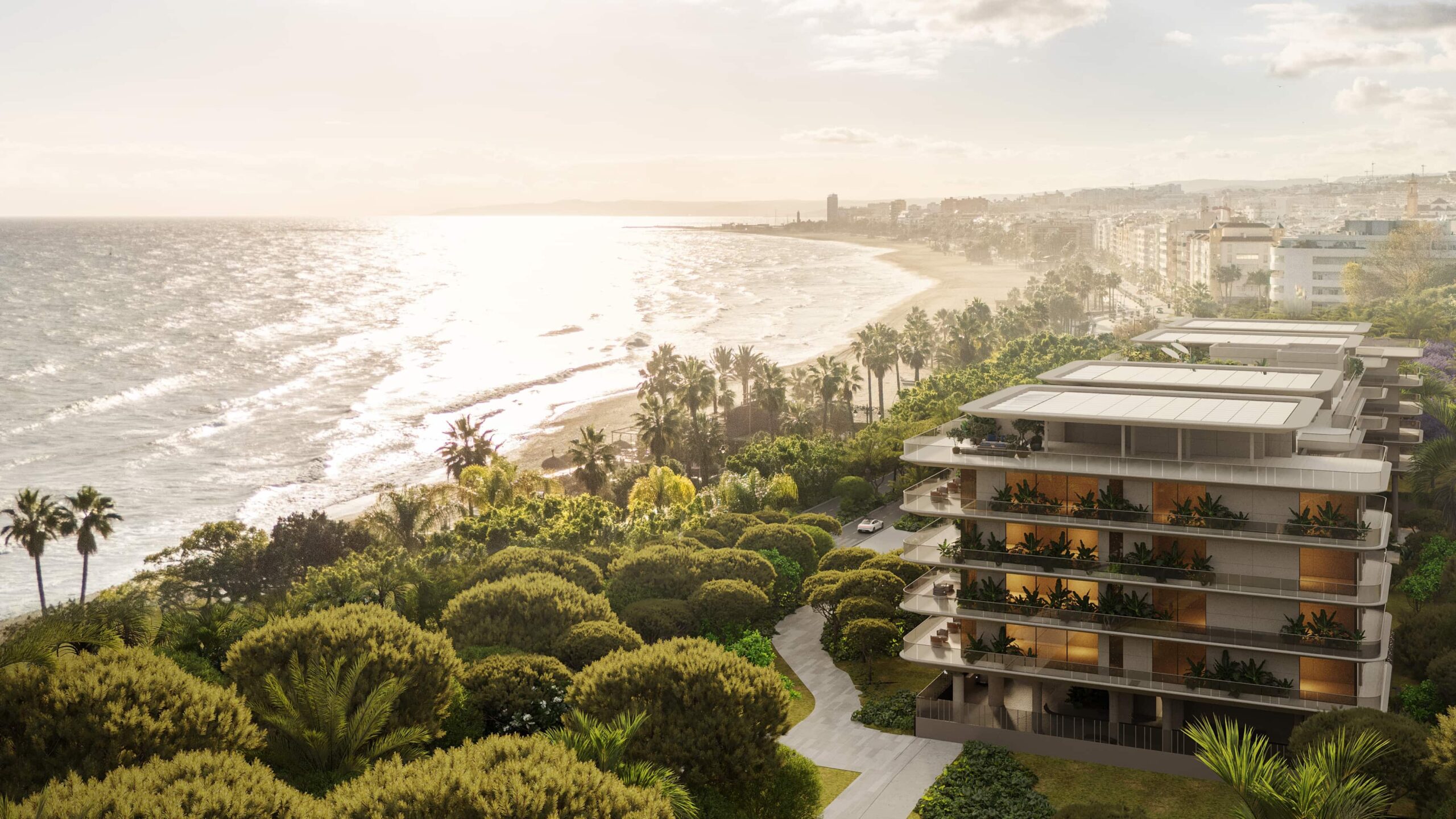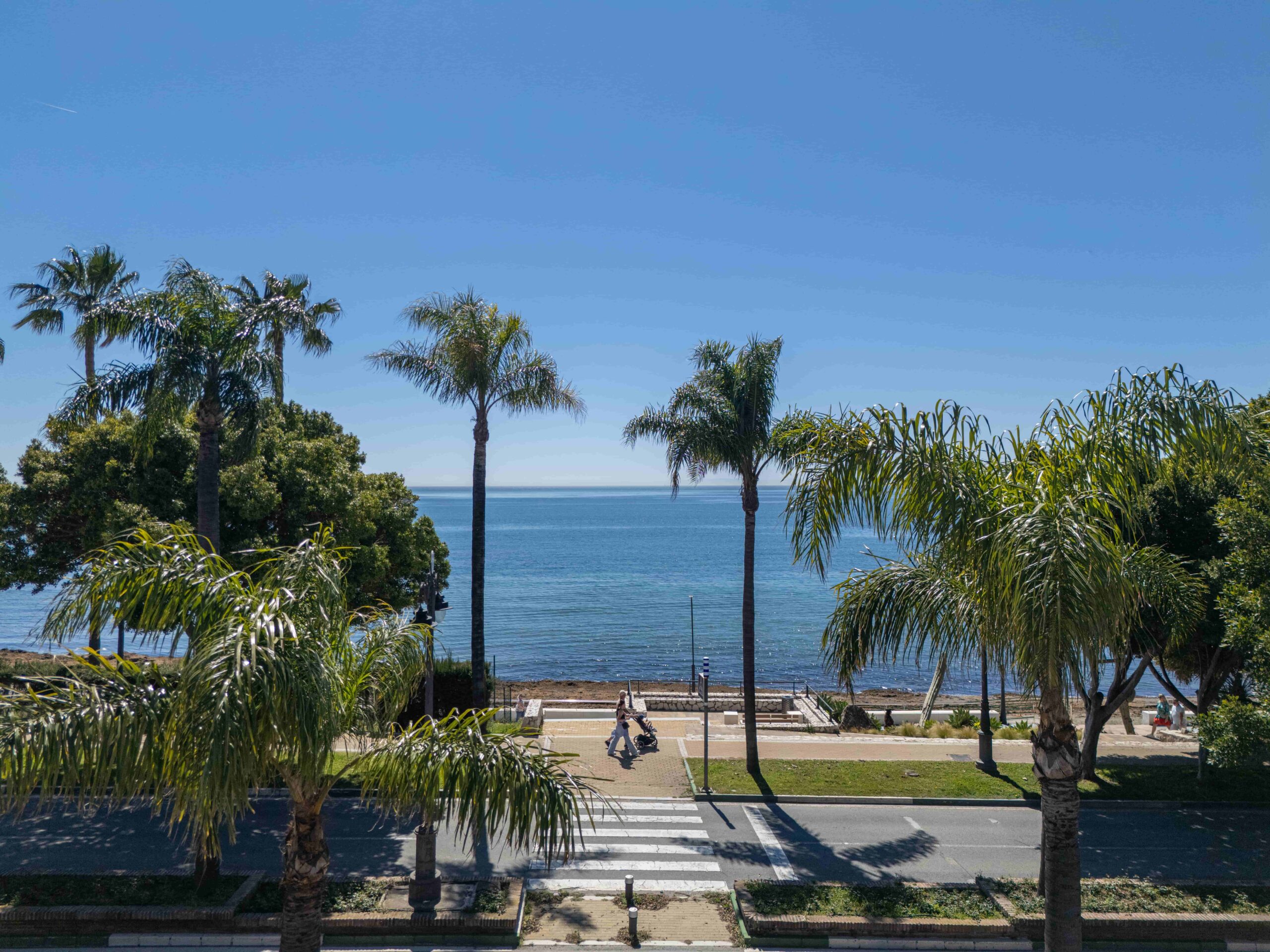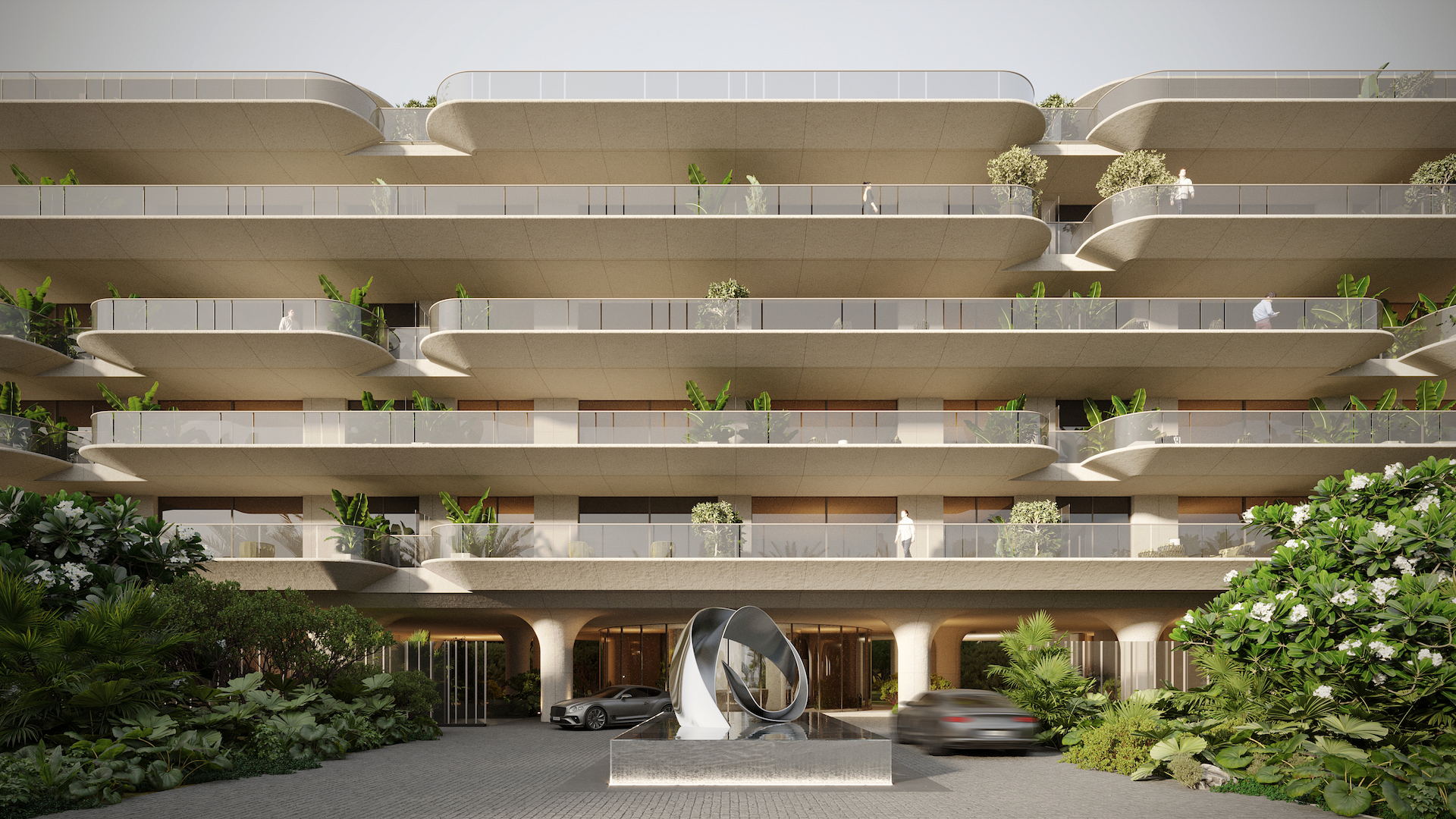Tucked between the Mediterranean and the mountains, Estepona has quietly emerged as one of the most compelling destinations on the Costa del Sol. Far from the noise yet fully connected, it balances heritage with modern comfort, attracting residents, investors and travellers alike.
This article brings together 20 essential questions—and answers—that outline why UHNWI invest in Estepona. From its location and lifestyle to investment potential and everyday living, a closer look reveals a town shaped by calm, quality and intention.
1. Where is Estepona?
Estepona is located in southern Spain, within the province of Málaga. It belongs to the autonomous community of Andalusia and sits on the western edge of the Costa del Sol. Nestled between the Mediterranean Sea and the foothills of the Sierra Bermeja, Estepona offers a more tranquil setting than its eastern neighbours.
2. Which airports serve Estepona?
Estepona is conveniently located between two international airports. Málaga International Airport lies approximately 80 km away, with a driving time of just under an hour via the AP-7. Gibraltar International Airport is even closer, at around 45 km, offering a secondary option for travellers from the UK.
3. How to get to Estepona?
The town is easily accessible via the AP-7 toll motorway, which runs along the Mediterranean coast. Regular bus services connect Estepona to major hubs like Málaga, Marbella and Algeciras. From Málaga Airport, a direct transfer by car or private shuttle is often the most efficient route.
4. How far is Estepona from Málaga?
Estepona is located approximately 90 km from the city of Málaga. The drive via the AP-7 motorway takes just under an hour, making day trips or commutes entirely feasible. Regular bus connections also link both cities.
5. How far is Estepona from Marbella?
Marbella sits 30 km east of Estepona. The drive between both towns takes around 25 minutes. This proximity allows residents to enjoy the amenities of Marbella—shopping, dining, schools—while living in a more peaceful setting.

6. Why is Estepona famous?
Estepona is known for preserving its traditional character while embracing modernity. Its Old Town, with whitewashed façades, cobbled streets and flower-lined alleys, is considered one of the most beautiful in southern Spain. A walk through the historic centre reveals a curated blend of small plazas, local eateries and open-air murals. The Orchidarium, home to over 5,000 plant species, adds a contemporary cultural layer. Beyond the town centre, Selwo Aventura offers a semi-wild nature experience, while nearby golf courses and coastal resorts attract a discreet crowd, including artists, designers and international homeowners seeking a quieter rhythm than neighbouring Marbella.
7. What makes Estepona unique on the Costa del Sol?
Estepona offers a distinctive blend of Andalusian heritage and contemporary living. Known as the “Garden of the Costa del Sol,” its historic centre is adorned with over 23,000 flower pots. The town’s cultural life extends beyond architecture—an “Open-Air Museum” of large-scale murals and public art brings creativity into the everyday. With 23 km of coastline, proximity to golf and mountain trails, and a population of 70,000, Estepona balances scale and authenticity, tradition and innovation.
8. How is Estepona becoming a greener destination?
Nature is not just a backdrop in Estepona—it’s integral to daily life. The town offers twice the national average of green space per resident, with parks and gardens expanding by 57% over the last decade. Efficient water recycling, smart irrigation systems and a 60-hectare Low Emission Zone in the city centre form part of its ongoing transformation. New developments reflect this commitment. Tyrian Residences, for example, introduces a Smart Boulevard with drought-resistant landscaping, noise-reducing surfaces and adaptive lighting—where sustainability and design meet.
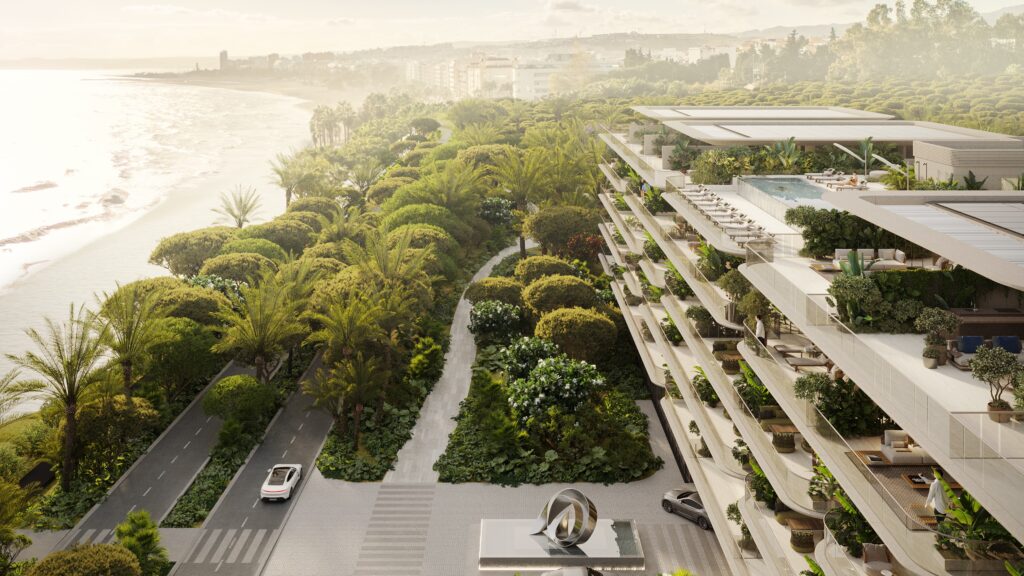
9. How is the weather in Estepona?
Estepona enjoys a Mediterranean climate, characterised by mild winters and warm summers. With over 320 days of sunshine annually, the town offers an ideal environment for outdoor living. The nearby Sierra Bermeja mountains provide a unique microclimate, often resulting in slightly cooler temperatures compared to other coastal areas during the peak of summer.
10. How is Estepona in winter?
Winters in Estepona are generally mild, with daytime temperatures averaging around 16°C. The town remains active throughout the year, with local markets, cultural events, and restaurants operating as usual. The reduced tourist influx during this season offers a more tranquil atmosphere, allowing residents to enjoy the town's amenities without the summer crowds.
11. Who lives in Estepona?
Estepona has grown into a diverse, international community. Alongside its Andalusian heritage, the town attracts residents from across Europe, particularly the UK, Germany, Scandinavia and the Netherlands. More than 25% of its population are foreign nationals, drawn by its relaxed pace of life, quality infrastructure and coastal charm.
12. Why is Estepona a good destination for families?
Estepona offers a calm and well-rounded environment for raising children. It combines access to international schools, quality healthcare and modern infrastructure with a slower, more grounded pace of life. Surrounded by sea and mountains, the town invites outdoor living, with beaches, hiking routes and green spaces within easy reach. For families seeking a balance between nature and everyday convenience, Estepona presents a compelling alternative to busier urban centres.
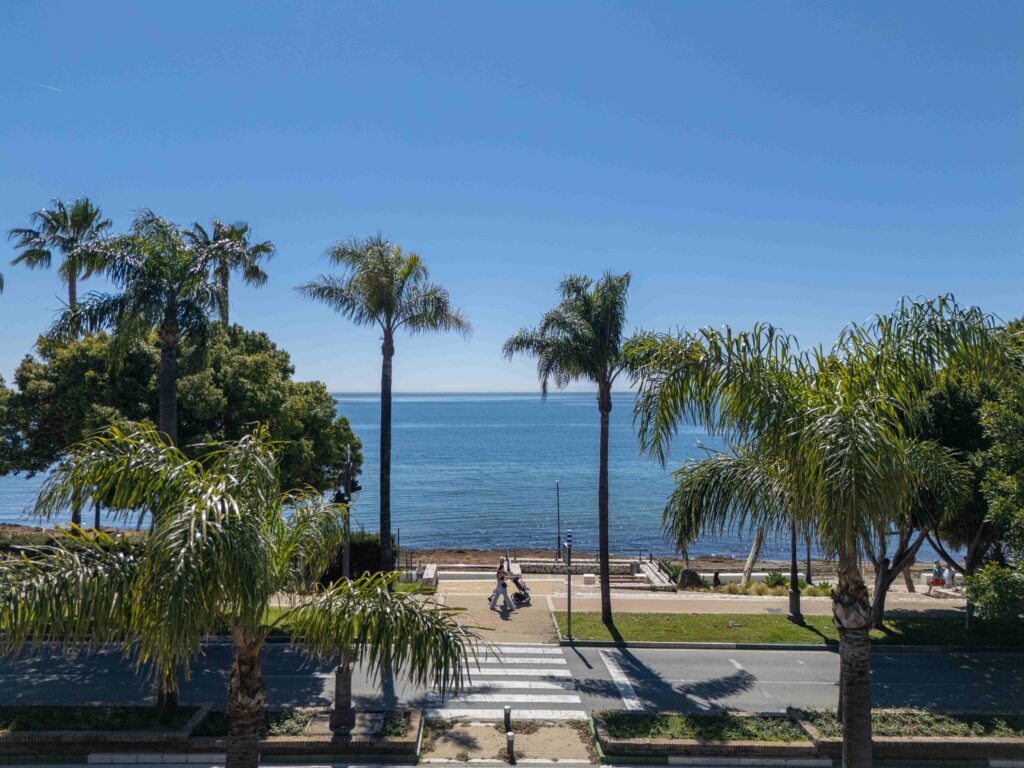
13. Why is Estepona a good destination for expats?
Estepona has become one of the most appealing destinations for expats on the Costa del Sol. Its combination of Andalusian character and international infrastructure makes it a comfortable place to settle without sacrificing authenticity. The town is especially popular among British residents. A study by Kyero ranked Estepona as the top destination for British property buyers in Spain.
The presence of English-language newspapers, radio stations and social clubs adds a layer of familiarity for those relocating from abroad. A wide range of international shops, from British butchers to Nordic grocers, ensures no flavour or favourite treat is missed. Everyday needs are well covered, with international schools, healthcare providers, and local businesses accustomed to working with foreign residents. Yet despite this convenience, Estepona retains a distinctly local rhythm.
14. What’s Estepona like to live in?
Estepona offers a harmonious blend of traditional Andalusian charm and modern amenities. The town's well-preserved Old Town, with its whitewashed houses and flower-filled streets, provides a picturesque setting. Residents benefit from a relaxed lifestyle, access to quality healthcare, international schools, and a variety of cultural and recreational activities. The proximity to both the sea and the mountains allows for a range of outdoor pursuits, enhancing the overall quality of life.
15. What attractions and experiences does Estepona offer for families?
Estepona blends outdoor life with cultural and educational experiences. Families enjoy parks, beaches and activities like Selwo Aventura, a wildlife park with safari-style lodges. The Orchidarium offers an immersive botanical experience. Local markets, like the Sunday marina market and the weekly “mercadillo”, add colour to weekends. Indoor options range from escape rooms to VR centres. The town’s balance between nature, culture and convenience makes it particularly appealing to families.
16. What outdoor activities can be enjoyed in Estepona?
With sea, mountains and sun, Estepona naturally encourages an active lifestyle. The coastline invites paddleboarding, sailing and beach walks, while the Sierra Bermeja mountains offer scenic trails for hiking and cycling. Golf is a central part of life here. The Costa del Sol is home to over 80 golf courses, with top-tier options near Estepona such as Villa Padierna, Finca Cortesin and El Paraíso Golf Club. Horse riding is also well represented, with the Escuela de Arte Ecuestre Costa del Sol offering world-class facilities just minutes from town.

17. Why UHNWI invest in Estepona?
Estepona currently leads the Costa del Sol in annual property price growth. As of April 2025, it has registered a 16.1% year-on-year increase—outpacing Marbella (+11.0%) and Benahavís (+9.5%). The town’s urban development strategy, focus on sustainable growth and rising international demand make it a compelling destination for long-term investment.
18. What’s the difference between Estepona and Marbella?
While both towns are located on the Costa del Sol, they represent distinct expressions of Mediterranean luxury. Marbella is where the region’s high-end story began—an international icon with a vibrant social scene and a long-established luxury infrastructure. Estepona, by contrast, embodies a more understated elegance. Often described as a haven of quiet luxury, it offers the same privileged climate, top-tier golf courses, and coastal beauty, but with a stronger emphasis on sustainability, local charm, and Andalusian character. Just a short drive apart, the two towns offer a complementary balance: energy and serenity, glamour and authenticity—all within easy reach.
19. What’s the difference between Estepona and Málaga?
Málaga, as a provincial capital, offers a bustling urban environment with extensive cultural institutions, shopping districts, and a busy port. Estepona, in contrast, provides a more relaxed coastal lifestyle. Despite its smaller scale, Estepona boasts a vibrant cultural scene, from open-air art to music festivals and landmark museums. Its growing commitment to sustainable urban development—including smart boulevards, green public spaces, and eco-conscious planning—has positioned it as a rising destination for those seeking a slower pace without sacrificing modern comforts.
20. What’s the difference between Estepona and Nerja?
Nerja lies on the eastern side of Málaga province and offers a charming coastal experience with dramatic cliffs, hidden coves, and a more rugged natural landscape. Though smaller in scale, it's a beautiful destination to visit—especially for those drawn to unspoilt nature and a slower rhythm. Estepona, on the other hand, has grown into a more structured town, offering a broader range of amenities, international services, and long-term investment potential. It combines scale with serenity, making it ideal for year-round living.

